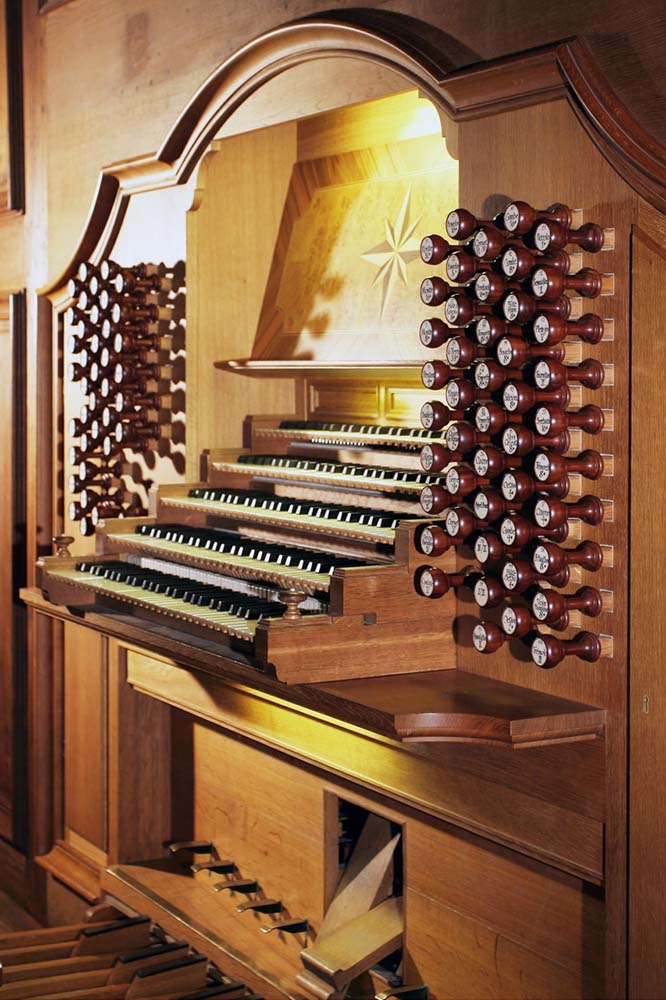SAINT BENIGN'S CATHEDRAL OF DIJON, THE MAIN ORGAN
The organ, at this Benedictine Abbey, was built (1740 -1745) by the Riepp brothers from Ottobeuren (Swabia) and was then considered at the most important in the French countryside with its Great 32' Principal stop. Karl-Josef Riepp built other organs in the French style, notably at Dole and later on at the Ottobeuren Abbey where he combined the French and German styles.
In 1787 Jean Richard from Troyes rebuilt the instrument : he increased the manuals'range from 51 to 54 notes, he replaced the windchests, he added two ranks to the Plenum and installed a brand-new chorus of reeds.
After the restorations by Daublaine-Callinet (1846-48) and Joseph Merklin (1860) most of the stops were kept although the thirds were removed in favour of the flues and the 32' was transferred to the Pedal.
It was only in 1953 that a major overhaul was undertaken by Roethinger under the supervision of the "Commission des Orgues historiques" (Chairman : Félix Raugel). The organ was redesigned with 3 Manuals and Pedal, equipped with an electropneumatic action and voiced in the neo classical style by Robert Boisseau.
During the period 1987-1996 the organ builder Gerhard Schmid reassembled in the old cases the organ according to its layout at the end of the 18th century with 4 Manuals and Pedal. A Swell division, located in an expression box behind the large case, groups together the 19th century and Roethinger stops. The present organ, with its 32' stop back to manual, has 73 stops,a 5 Manuals, a mechanical action for the keys and stop drawing,the latter being duplicated with an electrical action and a combinations system.
Translation : Françoise Lamon
